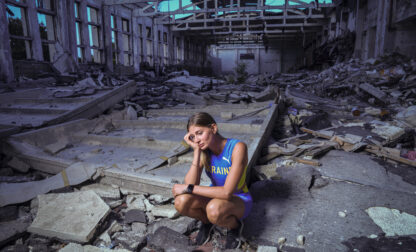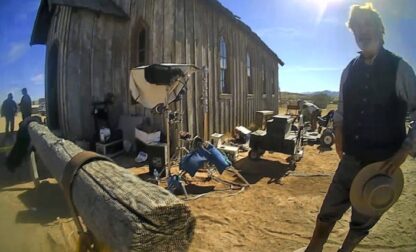Stunning visuals, presentation and a well-crafted story came together to tell the tale of the destruction of cenotes in Mexico’s Yucatan peninsula.
It’s not every day that a certification in scuba diving comes in handy at the AP, but it did for Teresa de Miguel and Rodrigo Abd for an illuminating project on how Mexico’s Maya Train could ruin the Yucatan peninsula’s intricate system of subterranean caverns.
When de Miguel got a tip earlier this year about the first steel and concrete pillars being embedded into the caverns, she decided to go beyond the spot story and speak about the larger threats that this hidden underground world is facing. Sources that she had been cultivating for two years — from the scientific community and environmental defenders on the ground — were key to help document the destruction when she and Abd traveled to the area in March.
De Miguel and Abd are both certified scuba divers and Abd has a camera housing that allowed them both to dive in the Yucatan peninsula’s cenotes and submerged caverns to document the beauty of what’s at risk with the massive train project. They also teamed up with Mexico reporter Megan Janetsky to make the ambitious project a Climate-Enterprise-Latin America collaboration.
The challenges of gathering visuals on the ground went far beyond technical difficulties. The government charged the military with the train and has kept absolute secrecy about it. So the first day Abd and de Miguel flew a drone over the construction, they were met with threats from security personnel, who said they would have to take their memory cards. To document the thousands of pillars being embedded into the caverns, the duo had walk long stretches of jungle and swim for dozens of meters (with their gear packed in dry bags) along underground rivers to reach the huge steel pillars.
The AP team came back from the reporting trip with hundreds of powerful photos and hours of footage and interviews, so Janetsky was key to putting together a text story. De Miguel worked closely with Climate team developer and designer Caleb Diehl, who put together the immersive presentation and created stunning maps to illustrate the scope of the destruction. The result is a visually stunning immersive presentation with video loops, photo galleries, immersive maps, illustration and an 11-minute mini-doc. The project also included a traditional NR and CR for News and a longer edit for Horizons.
For powerful all-formats storytelling with a rich digital presentation, de Miguel, Janetsky, Abd and Diehl win Best of AP — Second Winner.
Visit AP.org to request a trial subscription to AP’s video, photo and text services.
For breaking news, visit apnews.com.



